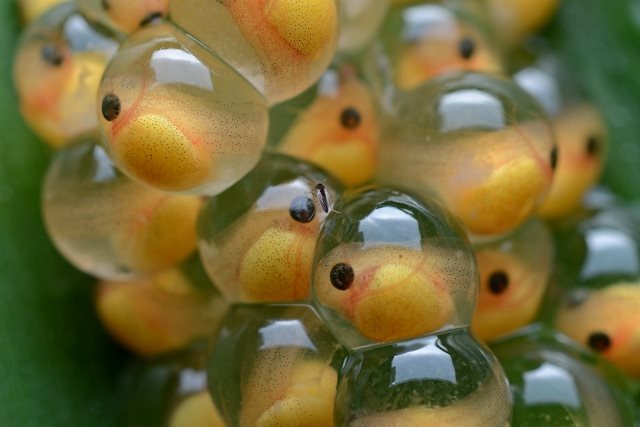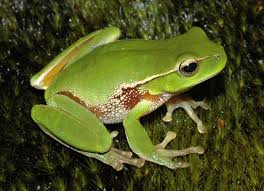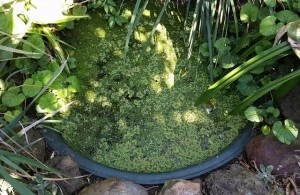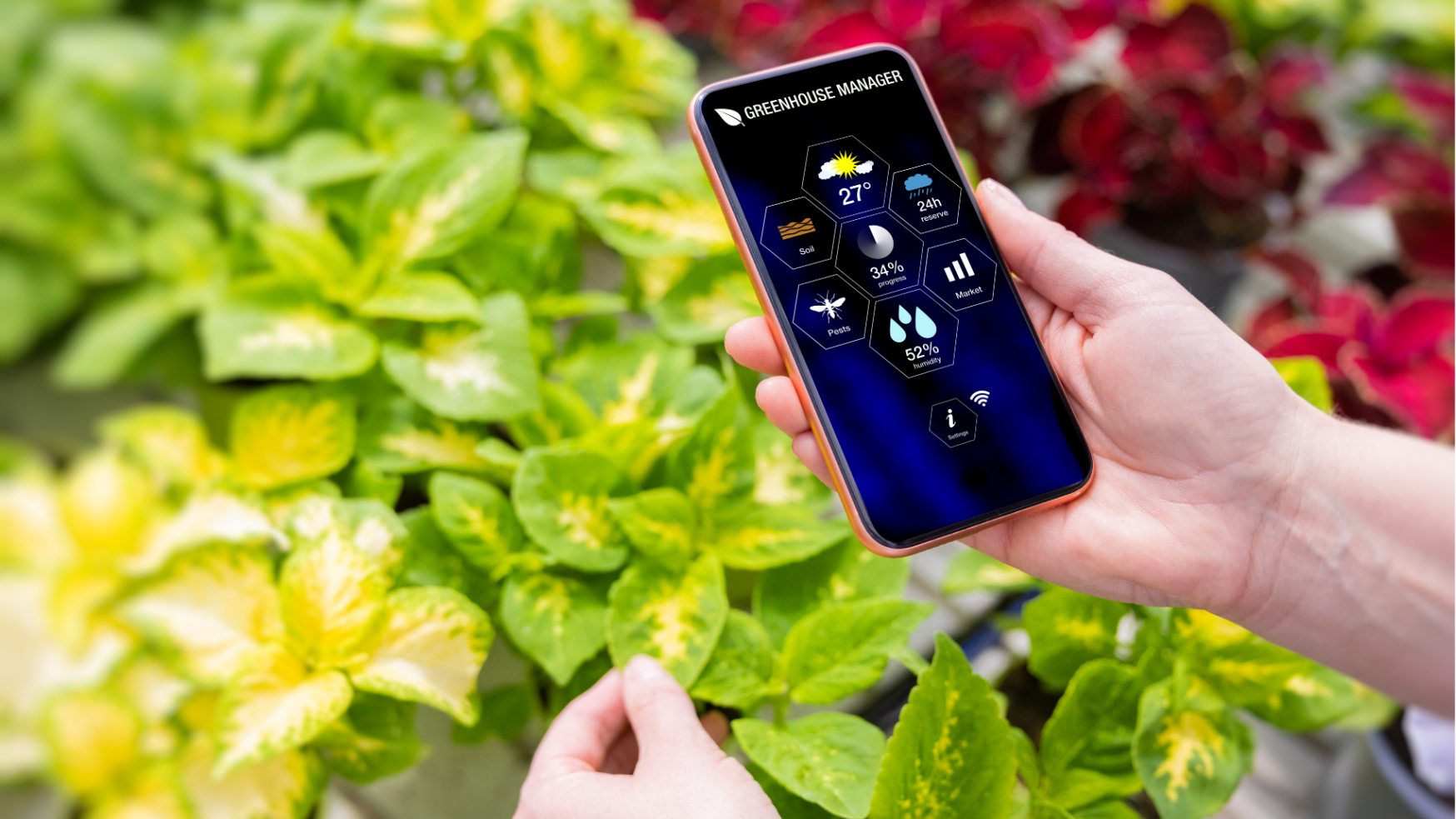 It’s been a number of years since the Year of the Frog was declared and a new international conservation action plan launched. Back then 500 zoos around the world enlisted to take part in an amphibian “Noah’s Ark” where most vulnerable species were moved to protected areas within aquariums and other institutions around the world to guarantee their future survival. Yet the dramatic population decline of frogs continues, with predictions that half of the world’s species will be extinct in twenty years. It sounds an ominous note, not just for all amphibians but the human species as well. What can gardeners do?
It’s been a number of years since the Year of the Frog was declared and a new international conservation action plan launched. Back then 500 zoos around the world enlisted to take part in an amphibian “Noah’s Ark” where most vulnerable species were moved to protected areas within aquariums and other institutions around the world to guarantee their future survival. Yet the dramatic population decline of frogs continues, with predictions that half of the world’s species will be extinct in twenty years. It sounds an ominous note, not just for all amphibians but the human species as well. What can gardeners do?
What a waste to lose these creatures that consume and help control insects, and are themselves an important food source for birds, snakes and other organisms in the food web. They have cultural clout too – the ancient Egyptians regarded them as a symbol of fertility, the Japanese that they are a sign of good luck – and how do we position Kermit?
Frogs, researchers tell us, are bell wethers for the environment, ‘bio-indicators’ positioned in a niche at the boundary of aquatic-terrestrial ecosystems. They are animals especially sensitive to pollutants and pesticides and, as a result, they have fallen victim to pathogens including fungi, viruses and bacteria, wiping out entire populations country by country. A detailed report1 has been prepared for the Australian Government on the threats and characteristics frog diseases and how they should be managed.
Taking action might appear daunting – where to start? – but scientists and ecologists are urging us to help the frogs and other struggling organisms, so making individual efforts that collectively impact on the macro problems. And in helping restore the unbalanced ecosystem, gardeners have a particularly important role to play.
For anyone concerned or curious to find out more, joining a conservation-oriented group is a starting-point to discover the situation in the wash-up of climate change. Internationally, herpetologists regularly blog on the site www.savethefrogs.com organised by ecologist Kerry Kriger. Frogwatch USA is an innovative online data entry, mapping and analysis platform where anyone interested in frogs can explore practical strategies towards survival of the animals. Closer to home, the Amphibian Research Centre champions the cause and looks at issues such as captive breeding and education too. A detailed report has been prepared for the Australian Government on the threats and characteristics frog diseases and how they should be managed.
There are bands of urban frog enthusiasts too, working to raise the amphibian profile – see stickyfrogs.tumblr.com for daily snapshots of a domestic Melbourne colony, gathering young followers from near and far.
 The Frog Census is a community-based biological monitoring program which is contributing to responsible management of frogs in Melbourne’s waterways. Zoos Victoria uses membership income to protect native species – the Baw Baw and spotted tree frogs are two. In 2013, it was also behind the release of 80 southern corroboree frogs into disease-free wild enclosures at Mt Kosciuszko.
The Frog Census is a community-based biological monitoring program which is contributing to responsible management of frogs in Melbourne’s waterways. Zoos Victoria uses membership income to protect native species – the Baw Baw and spotted tree frogs are two. In 2013, it was also behind the release of 80 southern corroboree frogs into disease-free wild enclosures at Mt Kosciuszko.
These initiatives are encouraging, but, by incorporating ponds, it is gardeners who will restore and maintain a local population that once might have occupied uncultivated land. Since the 1980s, frogs have disappeared fast from our suburbs, a direct consequence of habitat destruction, pollution, pesticide use and even artificial light (it attracts insects away from frog territory).
 We owe it to them to get back to basics and try to put water into our gardens. A pond is not difficult to introduce (see, for example, one of our earlier posts , Given the permeability of amphibian skin and their general sensitivity in juvenile and adult stage it goes without saying that for a pond to be a frog haven it is essential that your garden stays free of chemicals – products like Roundup and Zero (the commonly used herbicide glyphosate), malathion or carbaryl all greatly increase tadpole mortality. Slug pellets should be banned and won’t be necessary anyway, since frogs will eat up all available slugs.
We owe it to them to get back to basics and try to put water into our gardens. A pond is not difficult to introduce (see, for example, one of our earlier posts , Given the permeability of amphibian skin and their general sensitivity in juvenile and adult stage it goes without saying that for a pond to be a frog haven it is essential that your garden stays free of chemicals – products like Roundup and Zero (the commonly used herbicide glyphosate), malathion or carbaryl all greatly increase tadpole mortality. Slug pellets should be banned and won’t be necessary anyway, since frogs will eat up all available slugs.
The UK charity froglife.org is in no doubt that making a healthy pond is an important step in helping other local wildlife – “it will quickly colonise with various invertebrates including snails, dragonfly larvae and water boatmen” . As well as supporting the organisms a pond can set up a self-supporting cycle of hydration in the garden,which is preferable, argue environmentalists, to spending precious water on moisture-hungry lawns and thirsty ornamentals.
And don’t be impatient. Frogs aren’t meant to be shipped in, rather better to set up the right conditions perhaps even some shallow shelved areas where they can do their basking. They should turn up in a year or two.
Maggie Knight has written garden columns for publications including Good Housekeeping and The Melbourne Herald before spending almost twenty years in Europe, where she became involved in community development projects. She is now a consultant for sustainable and creative businesses and mentors for the Victorian Government sponsored Small Business Mentoring Service.
References
- K. Murray, L. Skerratt, G. Marantelli, L. Berger, D. Hunter, M. Mahony and H.Hines. 2011.Hygiene protocols for the control of diseases in Australian frogs. A report for the Australian Government Department of Sustainability, Environment, Water, Population and Communities.
Related Articles:
Managing Rats with IPM
“You dirty rat!” This phrase embodies the frustration many feel towards rats in the garden. These uninvited guests seem ever-present, scuttling along…
Citizen Science: A Pathway to Gardening Success and Biodiversity Conservation
In recent years, the realm of science has experienced a remarkable transformation, one that invites people from all walks of life to participate…


